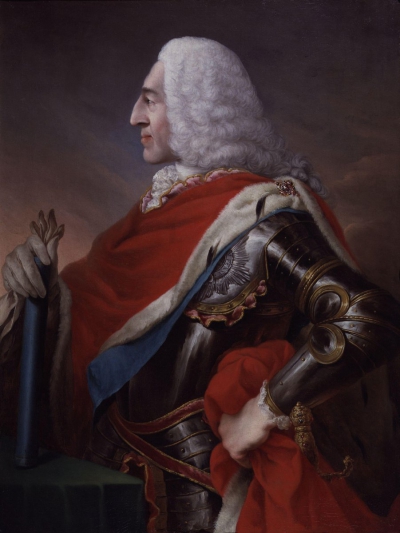The Battle of Glen Shiel (Scottish Gaelic: Blr Ghleann Seile) took place on 10 June 1719 in the West Scottish Highlands, during the 1719 Jacobite Rising. A Jacobite army composed of Highland levies and Spanish marines, was defeated by British troops, reinforced by a Highland Independent Company.
The rising was backed by Spain, then engaged in the 1718 to 1720 War of the Quadruple Alliance with Britain. It was intended to support a landing in South-West England, which was cancelled several weeks before; contemporaries on both sides viewed its failure as having fatally damaged the Jacobite cause.
Glen Shiel was the only battle of the 1688 to 1746 Jacobite Risings where the Jacobites remained on the defensive, rather than employing the Highland Charge. The battlefield is included in the Inventory of Historic Battlefields in Scotland, and protected by Historic Scotland.The mountain where the action was fought is called Sgurr na Ciste Duibhe; a subsidiary peak named Sgurr nan Spainteach, or 'Peak of the Spaniards', commemorates the Spanish marines.
Jacobitism (; Scottish Gaelic: Seumasachas, [ˈʃeːməs̪əxəs̪]; Irish: Seacaibíteachas, Séamusachas) was a largely 17th- and 18th-century movement that supported the restoration of the senior line of the House of Stuart to the British throne. The name is derived from Jacobus, the Latin version of James.
When James II and VII went into exile after the 1688 Glorious Revolution, the Parliament of England argued that he abandoned the English throne and they offered it to his Protestant daughter Mary II and her husband William III. In April, the Scottish Convention held he "forfeited" the throne of Scotland by his actions, listed in the Articles of Grievances.The Revolution created the principle of a contract between monarch and people; if that was violated, he or she could be removed. Jacobites argued monarchs were appointed by God, or divine right, and could not be removed, making the post-1688 regime illegitimate. While this was the most consistent difference, Jacobitism was a complex mix of ideas, many opposed by the Stuarts themselves; in Ireland, it meant tolerance for Catholicism, which James supported, but it also meant granting Irish autonomy and reversing the 17th-century land settlements, both of which he opposed. In 1745, clashes between Prince Charles and Scottish Jacobites over the 1707 Union and divine right were central to the internal conflicts that ended it as a viable movement.
Outside Ireland, Jacobitism was strongest in the western Scottish Highlands, Perthshire and Aberdeenshire, and areas of Northern England with a high proportion of Catholics such as western Lancashire, Northumberland and County Durham. Sympathisers were also present in parts of Wales, the West Midlands and South West England, to some degree overlapping with areas that were strongly Royalist during the Wars of the Three Kingdoms. The movement had an international dimension; several European powers sponsored the Jacobites as an extension of larger conflicts, while many Jacobite exiles served in foreign armies.
In addition to the 1689–1691 Williamite War in Ireland and the Jacobite rising of 1689 in Scotland, there were serious revolts in 1715, 1719 and 1745; abortive French-backed invasion attempts in 1708 and 1744; and several unsuccessful plots. While the 1745 rising briefly threatened the Hanoverian monarchy and forced the recall of British troops from Continental Europe, its collapse and withdrawal of French support in 1748 ended Jacobitism as a serious political movement.

 English
English  español
español  français
français  português
português  русский
русский  العربية
العربية  简体中文
简体中文 
